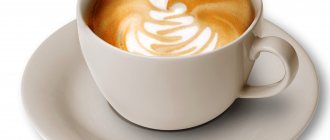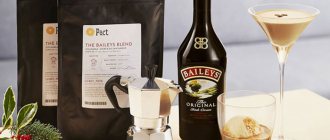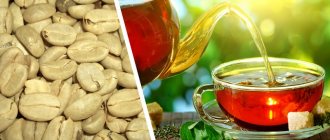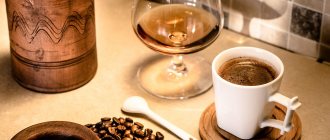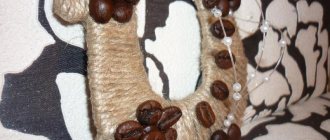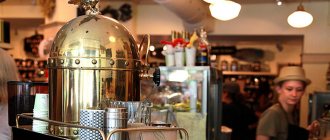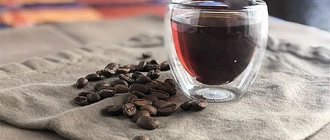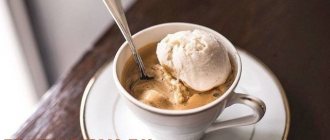Historians are still arguing about who was the first to suggest brewing and consuming bitter but aromatic coffee beans. The memory and technology of creating the first pharmaceutical tinctures based on alcohol have not been preserved - similar healing drinks are mentioned in the recipes of traditional medicine of the Egyptians, Arabs, and Greeks. But the fact remains that most coffee liqueurs have a specific author and homeland. And while enjoying the aroma of Irish Sheridan's or the aftertaste of Mexican Rumba, you can mentally thank these people.
Baileys coffee liqueur
Passoa
An ideal ingredient for fruit cocktails: a liqueur of an unusual red-pink color with an exotic sweet and sour taste of tropical fruits: mango, lemon and, of course, passion fruit. It is made only from natural ingredients: passion fruit comes from South America, and citrus fruits from Haiti, Cuba and Puerto Rico.
Add to cart
Legendary brands
Coffee liqueur can be called a drink created from freshly roasted coffee beans with an alcohol content of at least 15%. Acceptable flavorings should emphasize and not interrupt the smell of coffee. The most popular preparation method is percolation with neutral alcohol for 10-15 days. This method reveals and does not distort the aroma and aftertaste. Less commonly, ground coffee is extracted under pressure with boiling water. The “Espresso” mark on the bottle indicates precisely this method of preparation.
Despite the variety of recipes, classic and famous all over the world, there are not many options. To rightfully call yourself a connoisseur of coffee liqueurs, you need to try them.
Irish Sheridan's
The liqueur has been produced in Dublin since 1994. Its highlight is a bottle with two sections. Once in the glass, the two-layer Sheridans separates - the cream rises to the top, letting the thicker coffee component pass to the bottom. The stated strength of Sheridan's drink is 15.5% vol., but the taster can vary the ratio of alcohol to cream and chocolate by mixing the components in individual proportions. It is customary to drink Sheridans coffee either in one gulp or through a straw, plunging into the layers one by one.
Irish two-layer liqueur Sheridans
Mexican Kahlua
Sales started in 1936, when 4 entrepreneurs settled on one of the many recipes under consideration. The drink's ingredients are coffee and rum. The average strength of Kahlua is 20-36%. Additional ingredients depend on the variety:
- Original - cream and chestnut;
- Mint Mocha - mint and dark chocolate;
- Chili Chocolate - chocolate and chili pepper;
- Salted Caramel - vanilla and salted caramel;
- Vanilla - vanilla and spices;
- Espresso Martini - caramel and cream.
In 2002, a strong, unflavored liqueur, Kahlua Especial, was added to this list. Modern production is part of the Pernod Ricard concern (Mexico, Great Britain, Denmark).
Mexican liqueur Kahlua
Jamaican-Italian Tia Maria
The main ingredients are coffee and Jamaican rum. The manufacturer is proud to use a rare variety of high-mountain blue Blue Mountains coffee to produce. Only vanilla is used as an additive, softening the aftertaste. The drink is produced by Pernod Ricard. She also owns the rights to Kahlua liqueur.
Dutch Bols Coffee
The Bols brand claims to be the first manufacturer of factory-made liqueurs. The company has been operating since 1575. Chocolate Vanilla Bols are made from Colombian coffee and rum. The product comes off the assembly line of a modern factory in two versions: Creme de cacao dark and Creme de cacao white - dark and light, respectively.
Mexican coffee liqueur Tia Maria
Baileys
Perhaps one of the most popular liqueurs in the world, the taste of which is difficult to confuse with anything else: soft, creamy with characteristic notes of ice cream, milk chocolate and vanilla, shaded by a slight bitterness of Irish whiskey. Great neat, with coffee and ice cream, as well as in Baileys smoothies and other cocktails.
Add to cart
History of coffee liqueur - legends and reality
The most beautiful legend about the appearance of the tonic drink is of divine origin. Turkish coffee shops still insist that it was with freshly brewed coffee that the angel Gabriel raised the prophet Mohammed from his deathbed. Sheikh Omar, who is credited with developing the first recipes based on coffee, noted that the positive results of healing with coffee decoction included good spirits and increased performance within 24 hours after consumption.
The legend about the emergence and spread of coffee in the Ottoman Empire
But the combination with alcohol, which is not allowed by the traditions of Islam, is an invention of European doctors. Alcohol tinctures with coffee beans have been prescribed by monks for many ailments since the 11th century:
- indigestion;
- bone aches;
- headaches;
- depression.
But even these drinks cannot be fully called liqueur - the basis of production remained soaking and distillation. The taste left much to be desired - the mixtures retained the bitterness of coffee, alcohol and the dubious aroma of additional ingredients of medieval apothecary - crushed toad stone and unicorn antlers, suspiciously reminiscent of deer.
Drink made from coffee and alcohol in Europe
The transformation of the coffee alcoholic drink from pharmaceutical to dessert occurred only in the 17th century, when, to please noble gentlemen, pharmacists began adding sugar and honey to expensive elixirs. Officially, the meaning remained the same - therapeutic and prophylactic. With a couple of spoons of the mixture, healers relieved the effects of protracted feasts, restored strength before a stormy night, and stopped the first symptoms of a cold.
Drinking coffee drinks in medieval Europe
Interesting: Before the 19th century, the drink was called French and royal, emphasizing the price, justified by the cost of raw materials imported by the Venetians, and its inaccessibility. In the notes of the French court there are notes that His Majesty Louis XIV preferred the Populo and Rossolys brands.
The authorship of the coffee liqueur, like all others, is disputed by the Dutch. On their side is the fact that they have their own orange and coffee plantations, which greatly reduces the cost of their products.
And yet, Jamaica is usually called the ancestral home of liqueur, which is not surprising, given the regions where coffee is grown. Allegedly, it was to improve the efficiency of workers that traditional Jamaican rum began to be added to the coffee drink.
The spread of Jamaican coffee throughout Europe
Later, during the colonial wars, the Jamaican maid Maria shared the recipe with her Spanish mistress, thus thanking Donna for her salvation. In addition to the coffee itself, other ingredients were mentioned in the recipe:
- Jamaican rum;
- Madagascar vanilla.
According to another version, the same drink was prepared by Spanish teamsters and soldiers during long marches.
But two centuries later, in 1940, having made a beautiful advertisement out of the story of the rescue of the maid, Dr. Kenneth Lee Evan launched the production of modern liqueur Tia Maria (Aunt Maria).
Modern pages of history
In America, they tell a more prosaic version of the invention of coffee liqueur. Allegedly, the bartender of one of the transatlantic airlines, tired of complaints from chilled passengers about poor conditions, added strong Irish whiskey to cups of coffee, and to drown out the aftertaste, a large dose of sugar. History is silent about the reviews of the unusual dessert, but Irich Coffee in San Francisco has become very popular indeed. Only the main component has changed - instead of Irish whiskey, Baileys was included in the traditional recipe.
Cocktail based on Jamaican rum and coffee
The fundamental principles of liqueur production and the requirements for the drink were formed only in the 20th century. A strong alcoholic cocktail with spices, fruits and fruit juices, aromatic oils, extracts and burnt sugar or honey as a sweetener received the right to be considered such. The taste and aroma of coffee should be visible. Several versions of the classic drink are included in the register of the World Bartenders Association, although each region has its own preparation traditions, and at the client’s request, the chef can add almost any ingredient.
The most popular coffee cocktails
In addition to strong liqueurs (up to 45%), dessert (up to 30%) and creams (up to 25%) are distinguished. Depending on the climatic conditions of the region, drinks based on coffee liqueurs are served cold (even with ice cubes) or hot. Some recipes are national treasures - prepared in authentic bars and coffee shops:
- French coffee with Grand Marnier liqueur;
- Italian with amaretto, almonds and apricot kernels;
- Jamaican (Spanish) with the iconic Tia Maria or rum;
- Seville version of the drink with Cointreau and caramel;
- “Witch” or “Witch” Italian liqueur Strega;
- “Monastic” recipe based on Benedictine liqueur;
- Golden Frangelico with herbal and hazelnut flavors.
To this list you can add hundreds of homemade recipes - the secrets of housewives from different countries.
Serving coffee liqueur with ice cream
Historical reference
The first liqueurs appeared in the 13th century. Sweet tinctures based on herbs, roots, honey and sugar were made in monasteries and taken as medicine. The recipe for Chartreuse, one of the earliest liqueurs, is contained in a manuscript believed to date back to the 15th century. The first mention of the prototype of cream liqueur is found in documents of the 14th century. In Irish monasteries, whiskey was infused with thyme, anise and mint, and cream was added before use. The drink was believed to help with memory impairment and skin inflammation.
Baileys - the most famous cream liqueur
The history of Irish cream liqueur production began in 1973 with the advent of Bailey's. David Gluckman and his business partners needed to find a way to get rid of excess whiskey in warehouses, and they decided to create an experiment with recipes. The first sample of the liqueur was mixed in a mixer in a home kitchen from Jameson whiskey, fresh cream, sugar and cocoa powder.
The partners liked the result, but it took another two years to perfect the formula. The launch of the liqueur on the market became a sensation. Over the entire history of the brand, more than 2 billion bottles of Bailey's have been sold, and the popularity of the liqueur has not decreased over the years.
The success of Irish cream liqueur led to the emergence of many brands of cream liqueurs. Famous brands:
- Cruzan Rum - a mixture of rum, cream and spices;
- Dooley's - based on toffee and vodka;
- Heather Cream - with the addition of Scotch whiskey;
- RumChata - made from rum, cream and plant milk.
Peak sales of cream liqueurs occur during the Christmas and New Year holidays; in the summer, sweet and high-calorie alcohol is less in demand.
Bailey's is now promoting its products as part of the cocktail culture to attract young people interested in a healthy lifestyle.
"Amaretto"
The history of Disaronno Amaretto, as befits one of the oldest brands, begins with a legend. The Renaissance artist Bernardino Luini was presented with a delicious drink with the aroma of almonds by the beautiful daughter of an innkeeper in the town of Saronno, chosen by the master as his muse.
For centuries, the amber drink remained a local attraction, until at the beginning of the 20th century, the Giovanni Reina family, carefully preserving the old innkeeper’s recipe, founded the first liqueur production enterprise.
Amaretto is a bright, sweet and quite strong drink. It is made from brandy, flavoring the distillate with extract of almonds and apricot kernels and sweetening with sugar syrup. It is best drunk chilled, in a frappe glass filled with crushed ice.
Amaretto is widely used as a flavoring for desserts and baked goods; it goes well with cream, ice cream, chocolate, and coffee liqueur. The classic version of cocktails with almond flavor is “Godmother” and “Godfather”. For the first, take equal parts of vodka and liqueur and mix in a glass filled with crushed ice; for the second, use scotch tape instead of vodka.
The famous square bottle with a disproportionately large black stopper began to bottle Amaretto in 1971.
"Sambuca"
Another popular Italian liqueur, Sambuca Romana, will appeal to fans of moderately sweet and tart drinks with anise flavor. The liqueur got its name from another component included in its composition - black elderberry, in Latin - Sambucus nigra.
The tradition of finishing a meal with a strong drink infused with star anise was brought to Rome by the Saracens. On its basis, the first Sambuca was born in 1851. But real recognition came only 120 years later, when the fashion for drinks served with a special ritual spread.
The liquor had a ritual, and what a ritual it was! It was called “Sambuca with flies.” A strong drink was poured into a glass (traditional liquor strength is 38-42%), 2-3 coffee beans were thrown into it and the surface was set on fire. The drinker’s task is to blow out the flame and quickly swallow the contents, chewing the sweetness with a “fly” - a coffee bean.
If extreme sports is not for you, drink the liqueur like a regular digestif, serving it chilled with ice with dessert. Sambuca goes well with pastries and almond cakes.
The famous cocktail “Sambuca with flies”
Additional cooking tips
Some tips to help in the kitchen:
- If alcohol is used, it is recommended to dilute it with distilled water. Fertman's table will help you correctly calculate the proportions.
- You can include any coffee in the recipe, but connoisseurs of the drink recommend giving preference to Arabica. Other varieties may negatively affect the taste of the product.
- If you don’t have a fine sieve in your kitchen, you can replace the tool with gauze or a bandage. To improve the filtration process, the cut is folded into 2-3 layers.
How much does Sheridance cost?
Sheridans Coffee Liqueur is available in 375 ml, 0.5 l, 0.7 l and 1 l. The cost of the drink is also directly determined by the size of the bottle. For example, the smallest container of liqueur can be bought for 1000 rubles. A 1 liter bottle of Sheridans costs about 2,500 rubles. For example, XUXU Liqueur will cost you 1,500 rubles per 0.7 bottle, and Mintu 1,200 rubles per 0.5 bottle. That is, Sheridans is quite expensive.
How to choose a quality drink
Buying liqueur in the manufacturer’s company store is a guarantee of protection against counterfeiting. When choosing a product in the mass market, you have to be more careful:
- Synthetic additives are not allowed in the composition; a minimum of components is a kind of sign of quality;
- the consistency should be homogeneous, sediment and impurities are not typical for the drink;
- The original product is carefully wrapped and packaged; there cannot be any traces of glue near the label.
The authenticity of the drink must be documented.
Important: You must remember that opened liquor cannot be stored for more than a month.
Sale of alcoholic beverages
You also need to pay attention to the country of production. The leading exporters of quality coffee liqueur are:
- Mexico - more than 53% of world turnover;
- USA - almost 10%;
- Jamaica - just over 7%.
- Italy - 6%;
- Spain - 3.5%;
- France - 1.5%.
Supplies with other markings can be considered handicraft production - these breeders do not have production facilities for a full cycle.
Serving coffee liqueur with fruits and nuts
Manufacturing secrets
- Coffee. Both ground and soluble are suitable (depending on the recipe).
- Alcohol base. It is possible to use vodka, 40-45% alcohol, double distilled moonshine with a similar strength, inexpensive but natural cognac or rum.
- Sweeteners. Sugar and condensed milk are most often used, less often fructose.
- Supplements As a rule, these are spices that are added to the drink for flavoring.
- Sterility. In order to avoid microbial contamination, all containers, as well as spoons and bowls that will be used in the process, are strongly recommended to be disinfected (sterilized) or at least scalded with boiling water. After this, the accessories need to be dried.
- Dishes. It is better not to use aluminum, iron, or plastic. Glass and stainless steel are ideal.
Ladies cognac
Such a romantic name corresponds to the refined and delicate taste and positive warm color. It’s also not difficult to make: as soon as we tell you how to prepare milk liqueur with cognac at home, you will immediately understand that the recipe is similar to the previous one. The differences are in the components, proportions and exposure time, which determines the difference in organoleptic properties.
Ingredients for ladies' cognac
| Component | Quantity |
| milk | 500 ml |
| sugar | 550 g |
| cognac | 500 ml |
| lemon | half |
| chocolate | 20-30 g |
| vanillin | 10 g |
Step-by-step recipe for making ladies' cognac
- Take a two-liter jar, pour milk and cognac into it one by one (the order is not important), add sugar and mix well until it dissolves.
- Wash the lemon, finely chop half the fruit and, without peeling and straight with the seeds, place it in the same container.
- Grate the chocolate (it is needed for color, and it will also give a slight taste) and pour it into the jar along with vanilla, which you then tightly close with a lid.
- Let the drink sit for 14 days (choose a dark and dry place for it, keep it at room temperature), shake the container with it in the morning and evening.
- Strain the resulting tincture through gauze rolled up in 3-5 layers and bottle it.
- Place in the refrigerator to infuse for another 2 days to consolidate the taste.
- Serve it with hard cheese, cookies, banana, melon, pear, sweets, and it will give you no less pleasant emotions than the original Irish liqueur.
Did you know? This tincture will also be an excellent soak for the cake.
How to drink coffee liqueur correctly
Only Sheridans does not tolerate additional manipulations and additives. The remaining liqueur options provide room for creativity.
Cold liqueurs are served in a glass or bowl with a long stem. The optimal temperature is 12-20°. The warm aftertaste reveals itself most richly when consumed in one gulp. Fruits, nuts and cookies are suitable additions.
To reduce the strength, the liquor is diluted. In Germany, mineral water without gases is used for this; in the east, milk is used. Combine liqueur with juices and Grenadine syrup. In America, the version with Sprite is common, although connoisseurs are categorically against mixing liqueur with carbonated drinks.
Fans of strong alcohol add whiskey or rum to the finished liqueur, on the basis of which the drink was made. The tradition is common in the Scandinavian countries - regions with a harsh climate.
Ice cream is an excellent complement to liqueur. In any case, serve the digestif at the end of the meal to enjoy the aftertaste for a long time.
Where do fragrances come from?
There are two main techniques for flavoring liqueurs. In the first, alcohol (rectified or distillate) is infused with aromatic ingredients and then distilled again. The second is characterized by the absence of secondary distillation and involves only saturating the alcohol with aromatic components, either at elevated temperatures (the alcohol solution is repeatedly passed through a mixture of herbs or spices), or using the cold maceration method (at 20°C, the process can last several months). For cream liqueurs, techniques are used to homogenize a mixture of alcohol, cream and sugar under elevated pressure.
